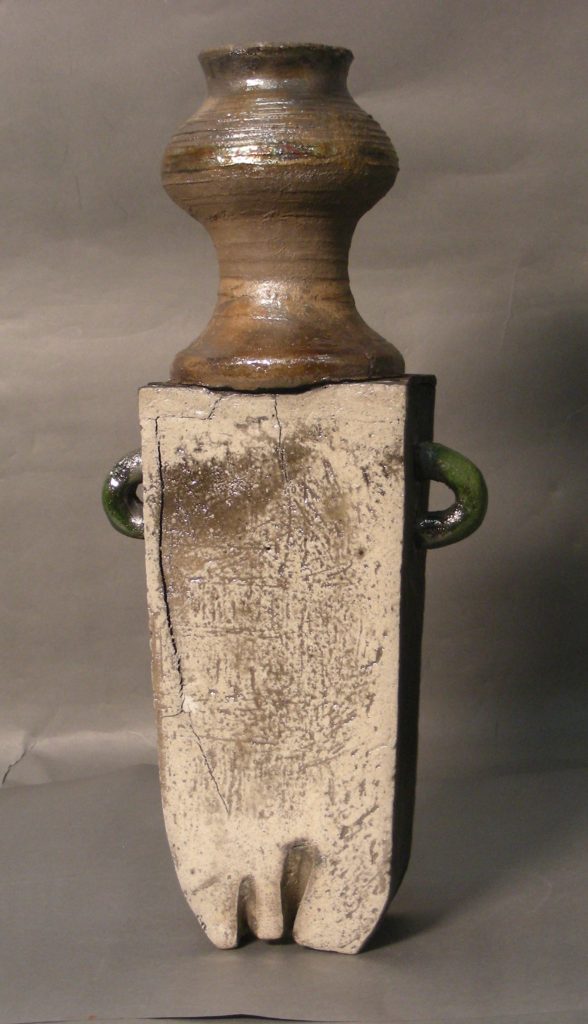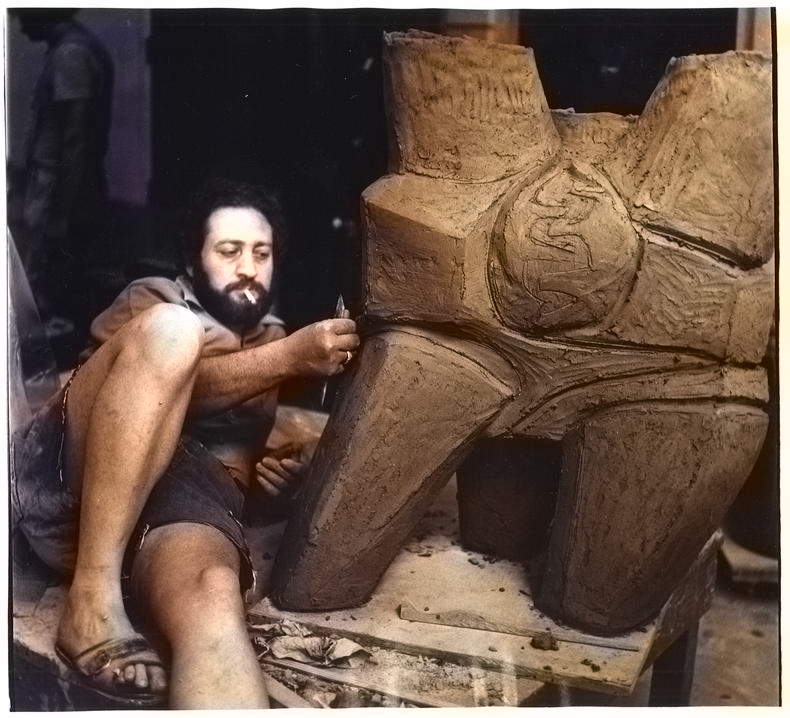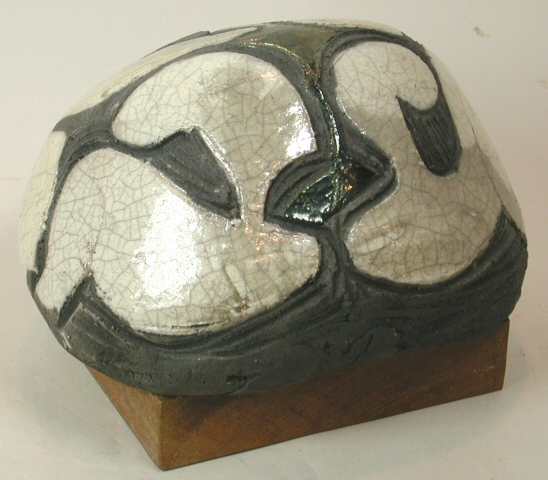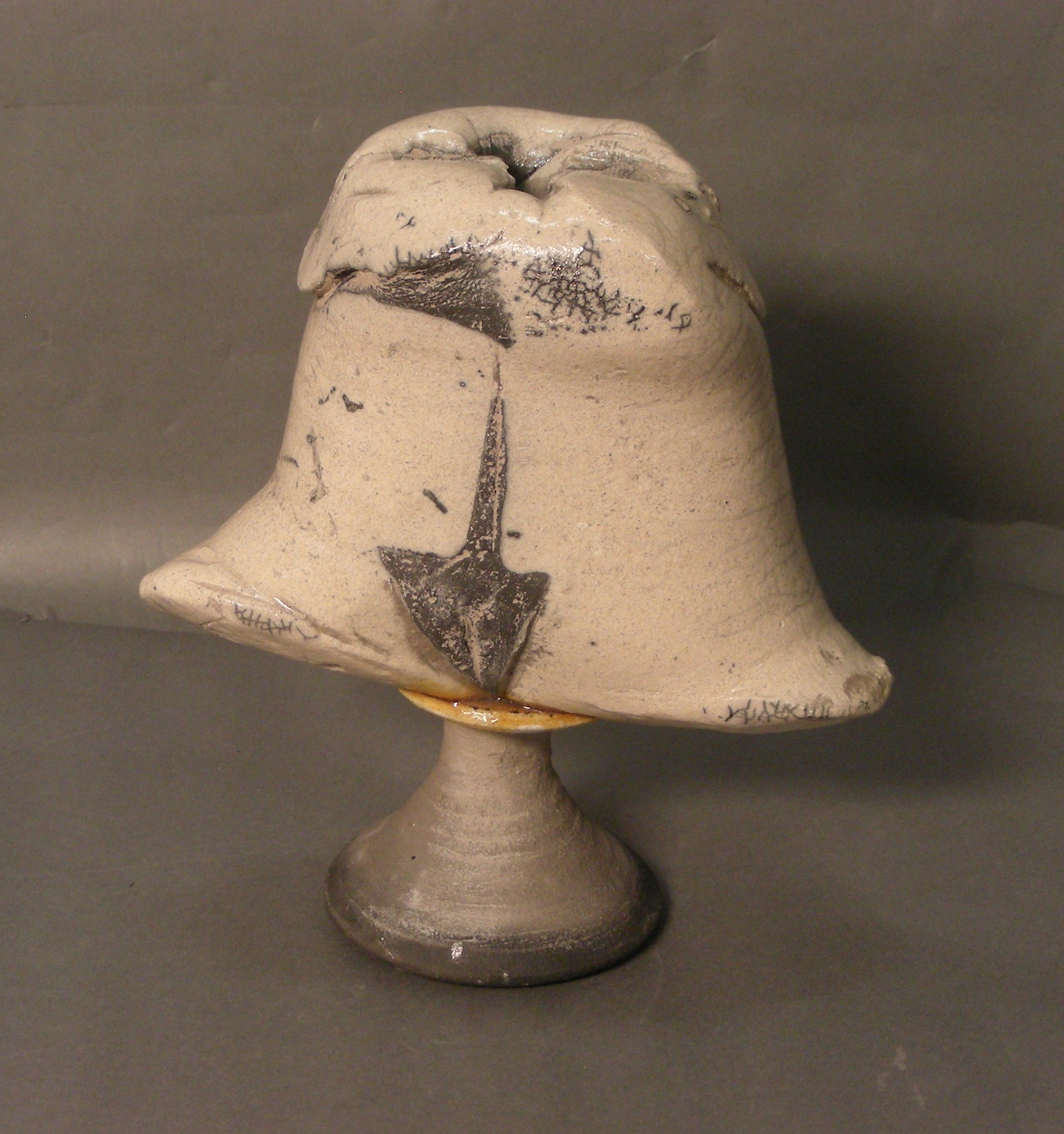Santo Mignosa

(b. 1934) born in Priolo, Syracuse, Sicily, Italy, lives in North Vancouver, British Colombia, Canada
Sculpture, 1973
raku glazed stoneware 15.25 x 6.75 x 4 inches, 93.39.262
Additional images below
Santo Mignosa has had a deep connection to clay his whole life. Born in Sicily, Italy, as the youngest of twelve children, he was expected to contribute to his family’s business of making clay bricks and tiles. He would help mine clay, mix it with sea water and sand, and then wood fire it into bricks for sale. When he went to college at the Art Institute of Florence in Italy, he studied ceramics, further refining his technical skills of wheel throwing and firing, as well as pursuing his own ideas in creating abstract figurative forms.
In 1957 Mignosa moved to live with his sister in Nelson, Canada, where he worked as a night janitor at the Nelson Civic Center while he learned English. Soon thereafter in 1959 he moved to Vancouver to work and study at the University of British Columbia’s ceramic studio for two years. Afterwards he returned to Nelson where he taught sculpture and life drawing at the Kootenay School of Art from 1961 to 1969. In 1969 he was appointed as a Professor at the University of Calgary in Alberta, where he taught ceramics, sculpture, and life drawing and anatomy. He returned to school in 1972 to earn a Master’s degree from Alfred University’s College of Ceramics in Alfred, New York.
In the spring of 1971, under the auspices of the International Academy of Ceramics, the Tennessee Arts Commission pledged its support for the promotion and establishment of the U.S. International Ceramic Symposiums. The Symposium’s mission to help develop a worldwide network of support for ceramic art was achieved by bringing together top ceramic artists from around the world for a month-long sharing of ideas and creation of innovative ceramics.
Mignosa represented Canada at the First U.S. International Ceramic Symposium, which consisted of twenty-five artists from thirteen different countries, and was hosted in the summer of 1973 at the Memphis Academy of Art. At the Symposium, he made a variety of abstract raku forms, including the two largest works of the Symposium, The Thing Which Came from Outer Space and Monument to the Liberated Woman, both of which are over three and a half feet tall. A lot of technical skill was required to produce works these large, and Mignosa reinforced the interiors of these slab-build sculptures by applying strips of burlap dipped into clay slip.



Left: Mignosa with his Sculpture, The Thing Which Came From Outer Space, stoneware, 44 x 36 x 26.5 inches, 93.39.312 Center: Compressed Base with Figure, 1973, raku glazed stoneware, wood, 8 x 10 x 8 inches, 93.39.263 Right: Helmet, 1973, raku glazed stoneware, 9 x 8 x 3.5 inches, 93.39.93
Following the Symposium, Mignosa continued to teach at the University of Calgary until he retired in 1989 with the honor of Professor Emeritus. He returned briefly to a teaching position from 2000 to 2005 to instruct human modeling in clay at the Vancouver Academy of Art, but otherwise his time has been spent leading a variety of ceramic workshops throughout Canada, and in creating his own work. Today, Mignosa is active in creating abstract ceramic sculptures, wheel-thrown vessels, ceramic murals, as well as pencil and ink drawings.
Mignosa has been exhibited throughout Canada as well as internationally. In addition to the 1973 International Ceramic Symposium in Memphis, he attended the 1975 International Ceramic Symposium in Beychne, Czech Republic. He is the recipient of a number of medals and awards for his work in exhibitions; and for his contributions to the arts he has been honored twice with an Achievement Award by the Alberta Government in 1971 and again in 1973. That same year, he co-founded the still running Alberta Potters Association, which connects Alberta potters and provides opportunities for growth, exhibition, and community building. In 1987 an annual scholarship for printmaking students was instituted in his name at the University of Calgary.
“I try to make my work speak for myself. Sometimes it is huge, and sometimes it is small. Sometimes it makes some special comment, and sometimes it doesn’t say anything. Sometimes it is form and sometimes it is color. It is just me, I suppose.” – 1973 International Ceramic Symposium catalogue
Video of Mignosa demonstrating how to throw on a wheel.
Written by Aiden Layer, TN Arts Intern

